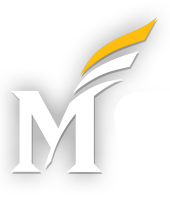Editor’s Note:
Writing Portfolio (n.) : Since the mid-1980’s, portfolios—collections of student writing that have been workshopped and revised during a term or over series of terms—have become a fixture in writing classes and programs across the US. These tools are useful for program assessment, but they may have a number of positive pedagogical effects as well, such as increasing students’ attention to the process of effective writing, attuning students to the importance of feedback and audience awareness, allowing students’ ideas (and so work) to mature over time, and presenting opportunities for metacognitive reflection.
For those interested, the following websites offer more information about the use of portfolios in support of undergraduate writing:
Washington State University, Junior Writing Portfolio
University of Massachusetts-Boston, Writing Proficiency Exam and Portfolio
University of Washington-Bothell, IAS Degree Portfolio
– Dr. Michelle LaFrance, Director of Writing Across the Curriculum
Editor, The Writing Campus
Portfolios in the Classroom: A Reflection
By: Cat Mahaffey
Cat is the Associate Director of First-Year Writing in the University Writing Program at the University of North Carolina, Charlotte. She teaches various levels of Writing and Inquiry in Academic Contexts. She is an avid blogger. Visit her teaching blog at catmahaffey.wordpress.com, follow her on Twitter @CatMahaffey, or email her at chmahaff@uncc.edu.
I’ve never taught a writing course without assigning a final portfolio. I’m not even sure how I would do it any other way. A composition class should be intensely formative for students as writers and thinkers, as writing growth only comes with practice. Some of that practice must be low-stakes so students can explore and take risks. As an opportunity to develop their writing over time, portfolios change my students’ relationship to the work they produce. Instead of getting a grade on each assignment and moving on, students are positioned to think through feedback they have received and to think through their texts more explicitly over time. Portfolios offer most students a real chance to understand themselves as writers and to hone their skills. But what does the portfolio do that other forms of evaluation of student work do not?
The answer to that varies widely. Writing instructors assign portfolios with wide-ranging goals. Portfolios can be:
- A formal venue for publishing exemplary final drafts – some instructors don’t see these revised versions until the portfolio is submitted at the end of the semester.
- A space to capture the writing process – a repository of artifacts that reveal to both student and instructor the stages of prewriting, drafting, and revising.
- A highly personalized expression of learning – using design to compose a narrative of the student’s journey through the course.
- An end-of-semester act of metacognition – performing self-analysis and reflection of course content and performance, pushing students to become more self-aware as writers and thinkers.
Of course, portfolios aren’t a new phenomenon in writing courses, but as writing scholars push toward more purposeful research about the benefits of these learning tools, the portfolio might become a weightier measurement for both students and programs. Along with this shift come new tensions – namely, how to determine what a writing portfolio should look like or what shape the writing assignments included in it should take. For example, my colleagues and I are struggling with how portfolios function as a genre and how much conformity is needed across our program with regard to content, design, and platform. In essence, we are grappling with whether the lack of continuity within programs is problematic enough to warrant some standardization.
Answering these questions requires us to move beyond the writing course and consider the possibilities of portfolios in broader terms, terms that build connections with other disciplines and their goals. Connecting what we do in writing classes to broader learning outcomes is not novel. After all, students gain much more than just improved prose from formative writing courses; they also transfer peripheral skills like critical thinking, advanced reading, and research synthesis – things every other discipline seeks to build on and measure. I invite others in writing studies and those teaching writing in the disciplines to join me in working through these tensions. How might a widening spread of portfolio use in college writing courses across the curriculum or for program assessment offer alternatives to more restrictive forms of assessment? The time is ripe for us to be more proactive as we watch legislators, like those in my home state of North Carolina, implement standardized tests that purport to measure students’ writing growth over the course of their university studies.

